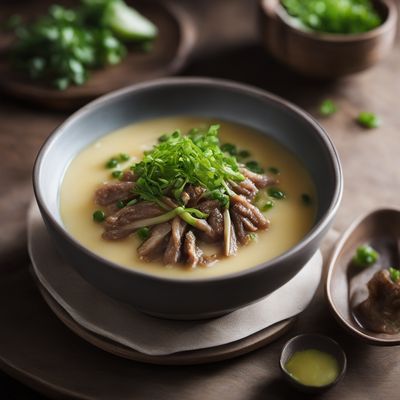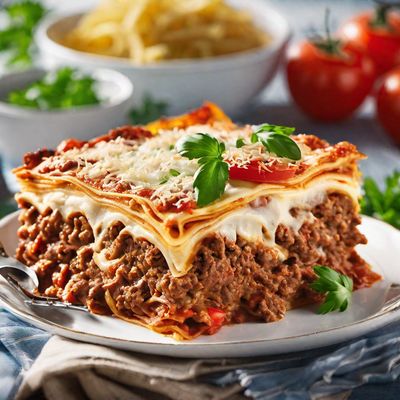
Ingredient
Whole eggs
The Versatile Powerhouse: Unleashing the Potential of Whole Eggs
Whole eggs are oval-shaped and come in various sizes, with a hard shell that protects the delicate contents inside. The yolk, a vibrant yellow or orange center, is surrounded by a translucent egg white. The yolk is rich and creamy, while the egg white is clear and viscous. Together, they create a harmonious balance of flavors and textures. Whole eggs have a distinct taste that is both savory and slightly sweet, with a smooth and velvety texture when cooked. They add richness, moisture, and structure to recipes, making them a fundamental ingredient in both sweet and savory dishes.
Origins and history
Eggs have been consumed by humans for thousands of years, with evidence of their consumption dating back to ancient civilizations such as the Egyptians and Romans. Chickens were domesticated around 6000 years ago, and since then, eggs have played a significant role in various cultures and cuisines worldwide. They symbolize fertility, rebirth, and new beginnings in many traditions and are used in religious ceremonies and celebrations.
Nutritional information
Whole eggs are a nutritional powerhouse, providing essential nutrients such as protein, vitamins (A, D, E, and B12), minerals (iron, zinc, and selenium), and healthy fats. They are also a great source of choline, which is important for brain health. One large whole egg contains approximately 70 calories.
Allergens
Eggs are a common allergen and can cause allergic reactions in some individuals. People with egg allergies should avoid consuming whole eggs or any dishes containing eggs.
How to select
When selecting whole eggs, look for ones with clean, uncracked shells. The shells should be smooth and have a consistent color. Avoid eggs with any signs of damage or a strong odor. Additionally, check the expiration date on the carton to ensure freshness.
Storage recommendations
Whole eggs should be stored in the refrigerator, preferably in their original carton to protect them from absorbing odors. They should be kept at a temperature below 40°F (4°C) to maintain freshness. It is best to use eggs within 3-5 weeks of purchase.
How to produce
Amateur egg enthusiasts can raise their own chickens to produce fresh eggs. This requires providing a suitable coop, proper nutrition, and care for the chickens. However, it is essential to check local regulations and restrictions before embarking on backyard egg production.
Preparation tips
To prepare whole eggs, crack them into a bowl and whisk them together to combine the yolk and egg white. They can be cooked in various ways, such as scrambled, fried, poached, or boiled. When baking, eggs act as a binding agent, adding moisture and structure to cakes, cookies, and bread. To achieve a fluffy texture in scrambled eggs, whisk them vigorously before cooking. For a perfectly poached egg, gently slide it into simmering water with a splash of vinegar. When boiling eggs, start with cold water and cook for about 9-12 minutes for a hard-boiled egg.
Substitutions
N/A (Whole eggs have unique properties that are difficult to replicate with substitutes.)
Culinary uses
Whole eggs are incredibly versatile and are used in a wide range of culinary applications. They are essential for making omelets, quiches, custards, mayonnaise, meringues, and soufflés. In baking, they provide structure, moisture, and richness to cakes, cookies, and pastries. They can also be used as a coating for fried foods or as a glaze for baked goods.
Availability
Whole eggs are commonly available in grocery stores, supermarkets, and farmers markets worldwide.
More ingredients from this category

Eggs from other eggs producer birds
"Beyond the Chicken Coop: Exploring the World of Exotic Egg Producers"

Quail eggs
Tiny Delights: Quail Eggs

Hen eggs
Versatile Protein Powerhouses

Duck eggs
The Gourmet Delight: Exploring the Richness of Duck Eggs

Geese eggs
"The Golden Gems: Exploring the Delights of Geese Eggs"
Recipes using Whole eggs » Browse all

Bahulu - Traditional Malaysian Sponge Cake
Fluffy Delights: Bahulu - A Taste of Malaysian Sponge Cake Heaven

Manchu-style Steamed Eggs with Anchovies
Savory Anchovy Egg Delight

Namibian-style Revuelto de Gramajo
Savory Namibian Potato and Meat Scramble

German Apple Bread Pudding
Heavenly Apple Delight: German-Inspired Bread Pudding

Açorda à Alentejana
Savory Bread Soup: A Traditional Portuguese Delight

Homemade Caramel Stroopwafel
Deliciously Sweet Dutch Caramel Waffle Delight

Gochujeon - Korean Spicy Pepper Pancakes
Fiery Flavors: Gochujeon - A Spicy Twist to Korean Pancakes

Tsukimi Soba with Tempura - A Delightful Japanese Harvest Moon Noodle Dish
Moonlit Delights: Tsukimi Soba with Crispy Tempura

Swiss Pear Tart
Pearlicious Delight: A Swiss Twist on Tart

Bosnian-style Lasagne
Sarajevo Delight: Bosnian-style Lasagne

Tulumba Recipe
Golden Delights: Turkish Tulumba

Mother-in-Law's Spicy Meatloaf
Fiery Meatloaf Delight